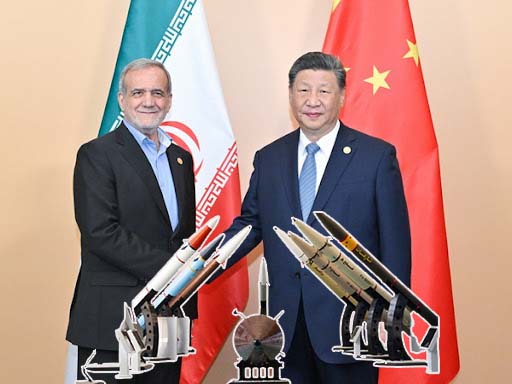
- The transfer of ballistic missile components from China to Iran is probably the most significant crossroads that could be crossed locally and globally in the context of the disruption of the security order.
- Iran is still keenly investing in missile technology in an effort to bolster its missile capabilities as an important arm in its national defence, with complicating effects for arms control measures and the diplomatic attempts to de-escalate tensions.
- Iran’s ballistic missile materials acquisition strategy from China highlights the changing dynamics of international alliances and escalates regional arms competition.
The transfer of ballistic missile components from China to Iran is probably the most significant crossroads that could be crossed locally and globally in the context of the disruption of the security order. It enhances an already choking tension in the Middle East while throwing light on the burgeoning strategic partnership between Tehran and Beijing. These supplies indicate that Iran is still keenly investing in missile technology in an effort to bolster its missile capabilities as an important arm in its national defence, with complicating effects for arms control measures and the diplomatic attempts to de-escalate tensions.
From a strategic perspective, ballistic missiles are advanced long-range weapon systems, capable of delivering any possible warhead of great destructive power. They serve as a deterrent, especially in unstable regions where considerations must be made of conventional military balances and their effect by means of sanctions or technological impediments to it. As such, despite Iran’s sour relations with Israel and Saudi Arabia, the acquisition and improvement of these systems have become one of the most vital issues for the Iranian leadership.
The cooperation agreement between Iran and China, more so since it was signed, has seen considerable forward advancements, covering the areas of energy, infrastructure, and military cooperation. Chinese cooperation, either through technology transfers or economic cooperation or indeed direct supply of missile components, has at least reduced Iran’s capacity to comply with international sanctions.
China is, in return, looking for energy resources and to pursue its own strategic goals in the area. There are several purposes for which Iran seeks to upgrade its missile capabilities. First, there is the perception of threats from regional as well as global powers, particularly the United States and Israel, and the need to deter them. Secondly, there is the need to bring its missile forces up to date to compensate for the deficiencies of Iran’s now antiquated air force, which is under severe constraints due to sanctions. Missiles also act as leverage for Iran by strengthening its influence through support of non-state actors such as Hezbollah and the Houthis. Finally, the exit of the United States from the Joint Comprehensive Plan of Action has caused Tehran to hasten its search for cutting-edge missile technologies to the construction of a holistic security architecture.
There are significant international implications to Iran’s procurement activities. Thus, Western and Gulf countries are likely to intervene with greater scrutiny, possible sanctions, and diplomatic pressure against the Chinese entities involved in these transfers. Such eventualities only serve to further deteriorate security in the region and complicate the ongoing non-proliferation undertakings.
In summary, Iran’s ballistic missile materials acquisition strategy from China highlights the changing dynamics of international alliances and escalates regional arms competition. Thus, the strengthening of the Iran-China partnership will bring newer challenges to the existing power framework and increase the prospect of military conflict. An equally complicated dilemma now faces the international community: to restrain the arms race without aggravating existing divides and geopolitical fault lines.
